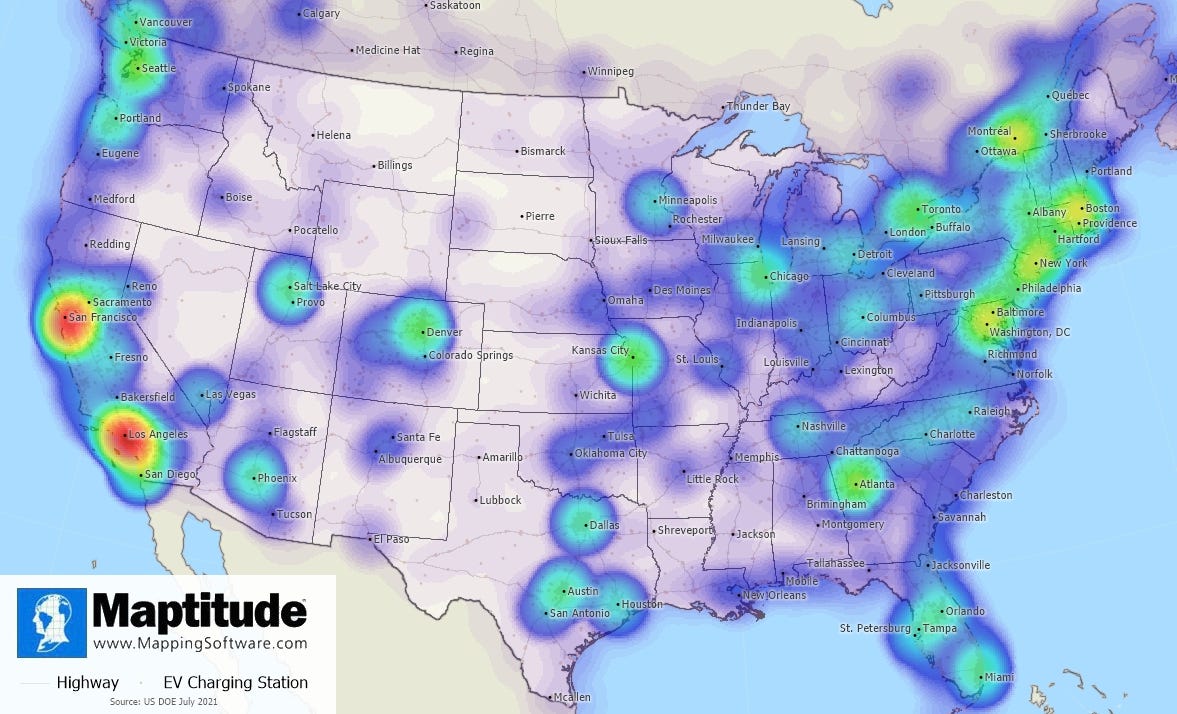The electric vehicle (EV) market in North America is experiencing a divergence: while the stock performance of EV manufacturers and traditional automakers has shown volatility and weakness, the adoption rates of EVs continue to grow. This trend underscores the growing consumer and regulatory interest in electric transportation despite the financial market's fluctuations. This post explores the growth of the EV fleet, the expansion of charging infrastructure, and the driving factors behind these trends.
New to the Exro story? Read our Intro post below:
Growth of the EV Fleet in North America
The growth of EV fleets in North America has been remarkable over the past decade. In 2011, EVs represented a tiny fraction of the total vehicle market. By 2021, EVs accounted for approximately 3% of all vehicles sold. Several key factors have contributed to this growth:
Technological Advancements: Significant improvements in battery technology have increased the range and efficiency of EVs. For example, the Tesla Model S range has increased from about 208 miles in 2012 to over 370 miles in 2021.
Cost Reductions: The cost of lithium-ion batteries has dropped by nearly 90% over the past decade, making EVs more affordable for consumers.
Government Incentives: Various federal and state incentives, such as tax credits and rebates, have made EVs more attractive.
Charging Infrastructure Expansion
The expansion of the charging network has been crucial to the growth of EVs. North America has seen a substantial increase in the number of charging stations:
Public Charging Stations: As of 2021, there were over 41,000 public charging stations in the United States, up from about 16,000 in 2016.
Market Projections
The future looks promising for EVs in North America:
Sales Projections: Analysts project that EVs will account for about 10% of all vehicle sales in the United States by 2025 and could reach 30-50% by 2030.
Producer Commitments: Many automakers have announced ambitious plans for EV production. Ford, for instance, aims to have 40% of its global sales be electric by 2030. General Motors plans to phase out gasoline and diesel vehicles by 2035.
Challenges to EV Adoption
Despite the positive trends, several challenges remain:
Range Anxiety: Although the range of EVs has improved, some consumers are still concerned about the distance they can travel on a single charge.
Charging Infrastructure: While the charging network is expanding, it is not yet as ubiquitous or convenient as gas stations.
Initial Costs: Although the total cost of ownership for EVs can be lower than for traditional vehicles, the initial purchase price remains higher, deterring some buyers.
Conclusion
Despite the ongoing weakness in EV stocks, the adoption of electric vehicles in North America continues to accelerate, driven by technological advancements such as EXRO’s coil driver, cost reductions, and supportive government policies.






